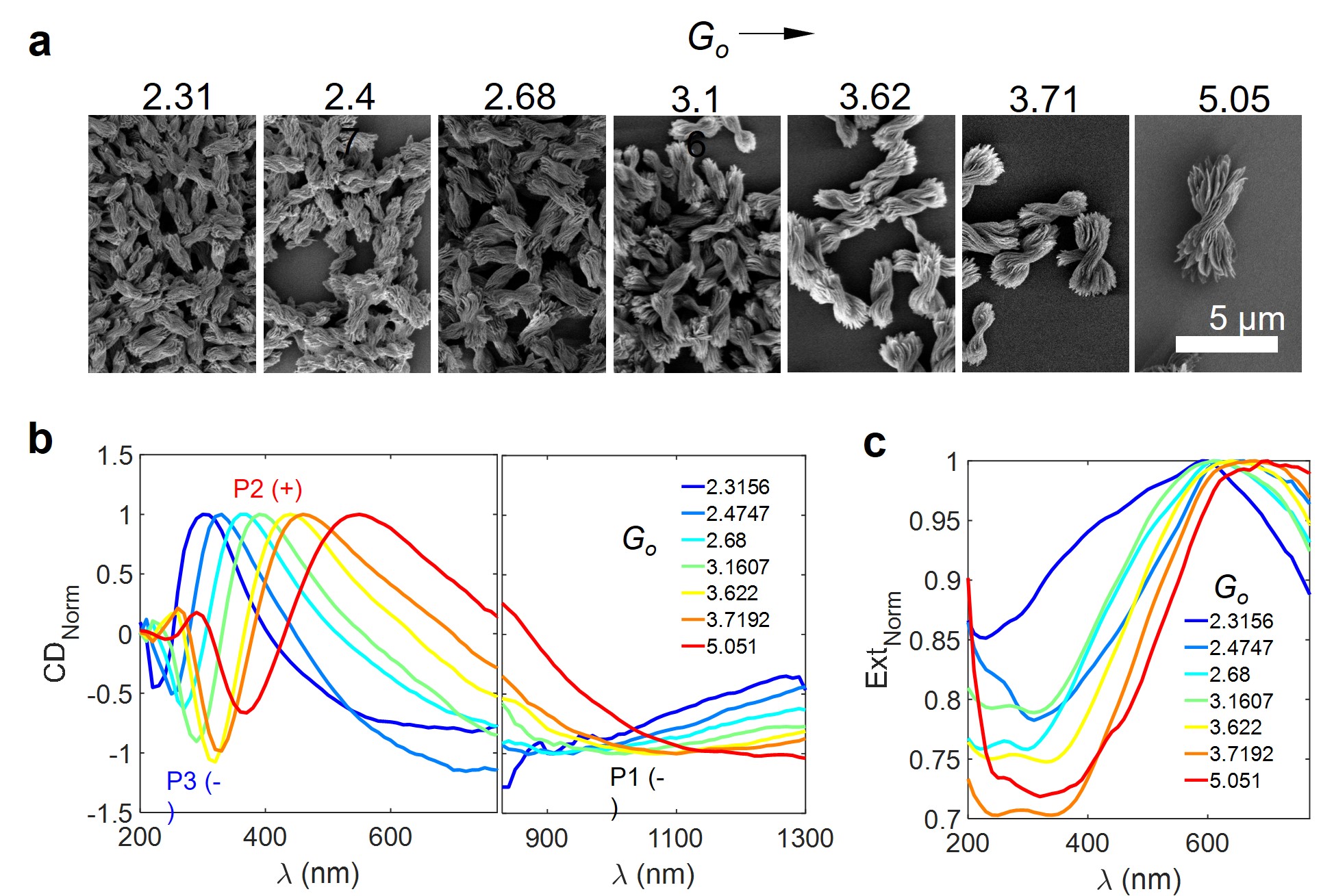(167ao) Hierarchical Self-Assembly of Bowtie Shaped Nanostructured Microparticles with Tunable Chiroptical Activity
AIChE Annual Meeting
2022
2022 Annual Meeting
Materials Engineering and Sciences Division
Poster Session: Materials Engineering & Sciences (08A - Polymers)
Monday, November 14, 2022 - 3:30pm to 5:00pm
Mathematical descriptors of mirror asymmetry are continuous, but chirality in chemical disciplines is often viewed as a binary characteristic of molecules and there was no known chemical structure with widely variable chirality measures. Here we show that sub-microscale nanostructured particles can be self-assembled from anisotropic building blocks with widely variable geometry, chirality measures and optical asymmetry while retaining consistent bowtie shapes. The self-limited self-organization of anisotropic building blocks [1] makes possible high synthetic reproducibility and computational predictability of their geometries for different concentrations of reagents, ionic components, enantiomeric compositions, media polarity and other parameters (Figure 1a). The positive and negative chiroptical peaks observed from UV to IR parts of the spectrum (Figure 1b,c) originate from absorptive and scattering phenomena with contribution from both dipolar and quadrupolar modes characteristic of nanostructured particles with submicron scale chirality.[2] The dependence of geometrical chirality measures and chiroptical characteristics enable the predictive synthesis of bowties with desirable polarization rotation. Controllable pitch, length, width, and thickness leads to tunable chiroptical activity across from UV to IR, which can be used to print chiroptical metasurfaces for photonic markers for machine vision devices.
References
- Xia, Y. et al. Self-assembly of self-limiting monodisperse supraparticles from polydisperse nanoparticles. Nature Nanotechnology 6, 580–587 (2011).
- Feng, W. et al. Assembly of mesoscale helices with near-unity enantiomeric excess and light-matter interactions for chiral semiconductors. Science Advances 3, (2017).
Figure 1. a, SEM images of bowties of varying sizes and their corresponding Osipov–Pickup–Dunmur chirality index are listed. b, Continuously tunable circular dichroism spectra for bowties shown in panel a and their corresponding c, extinction coefficients are plotted.
